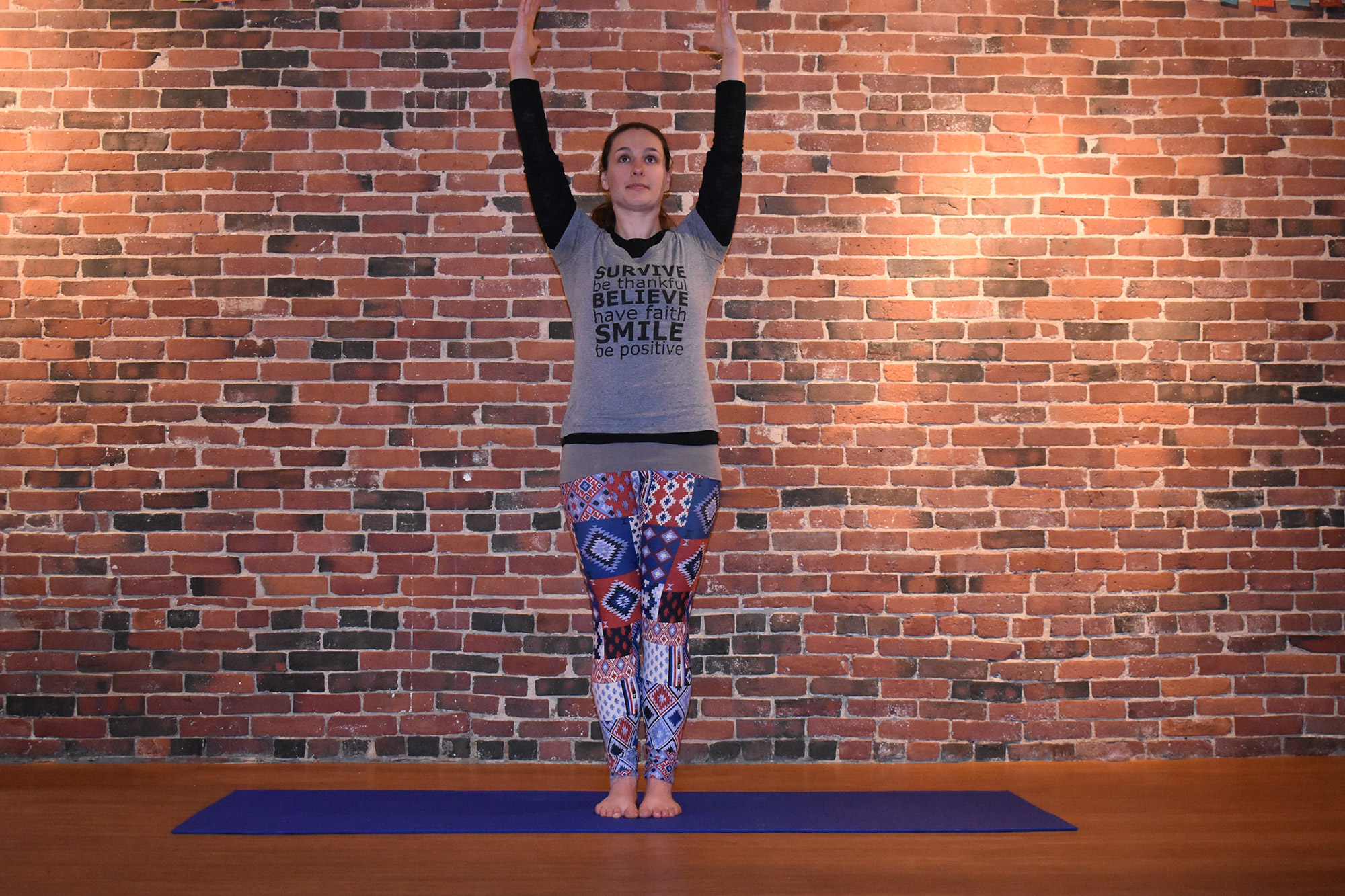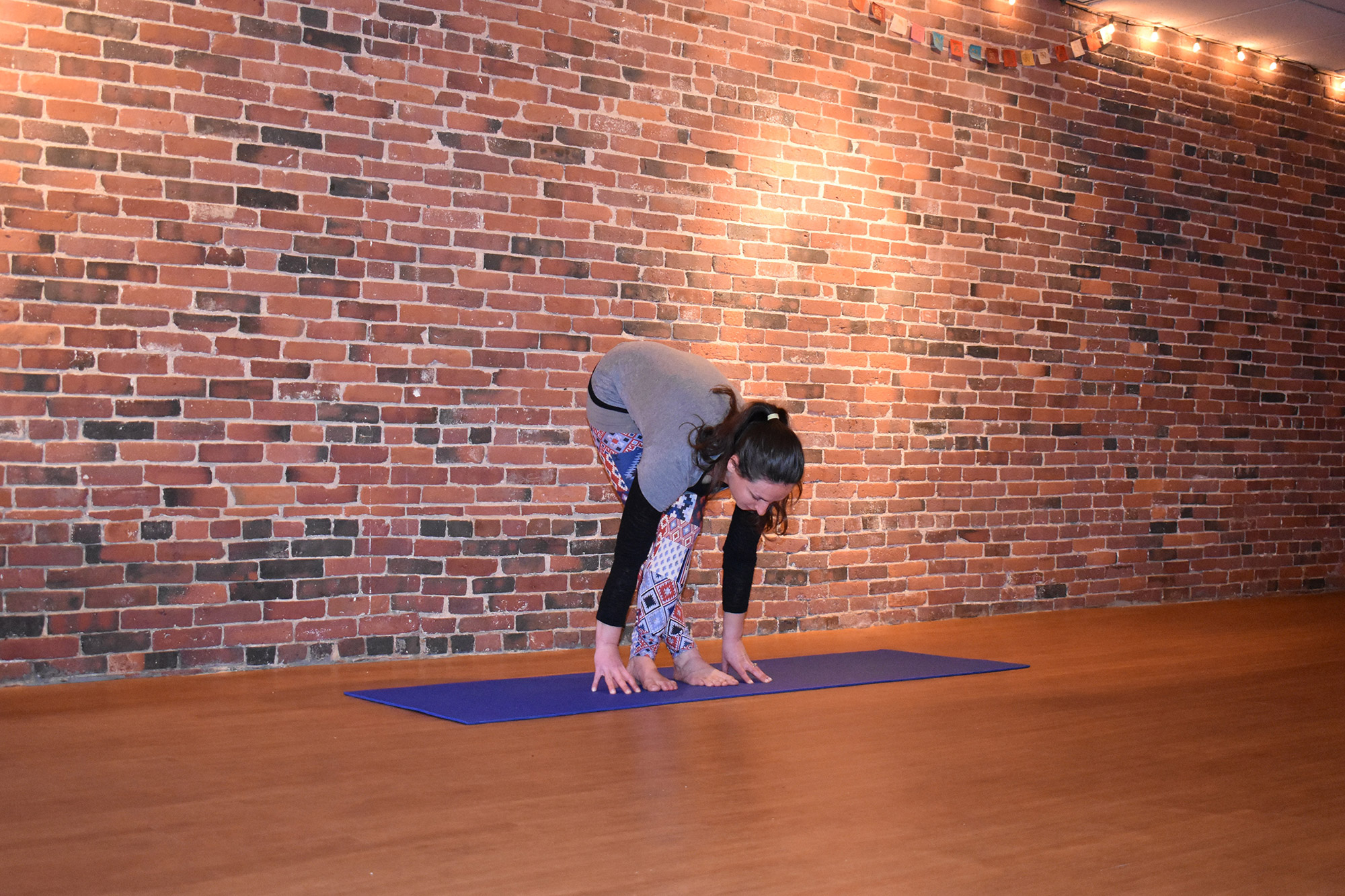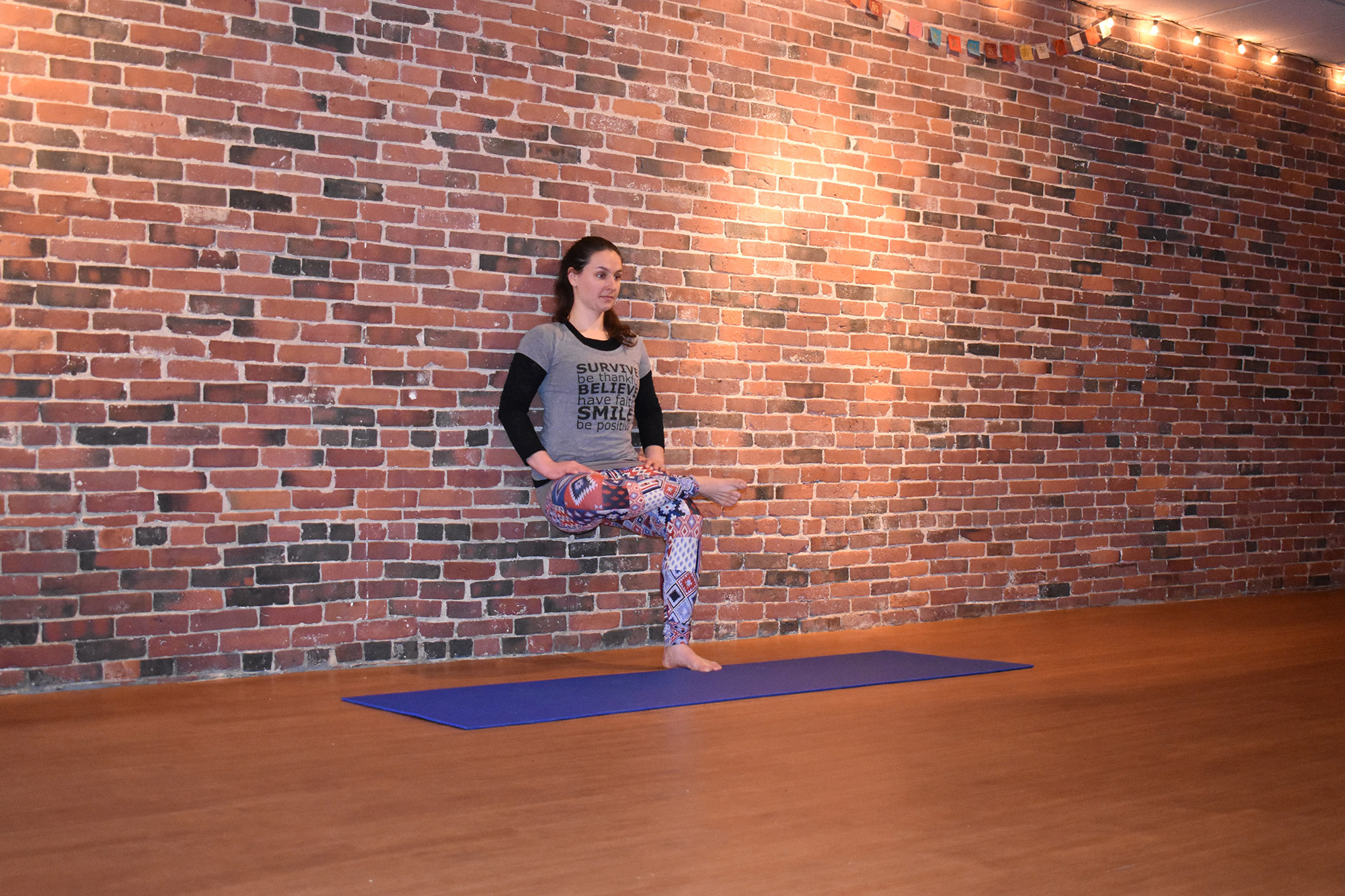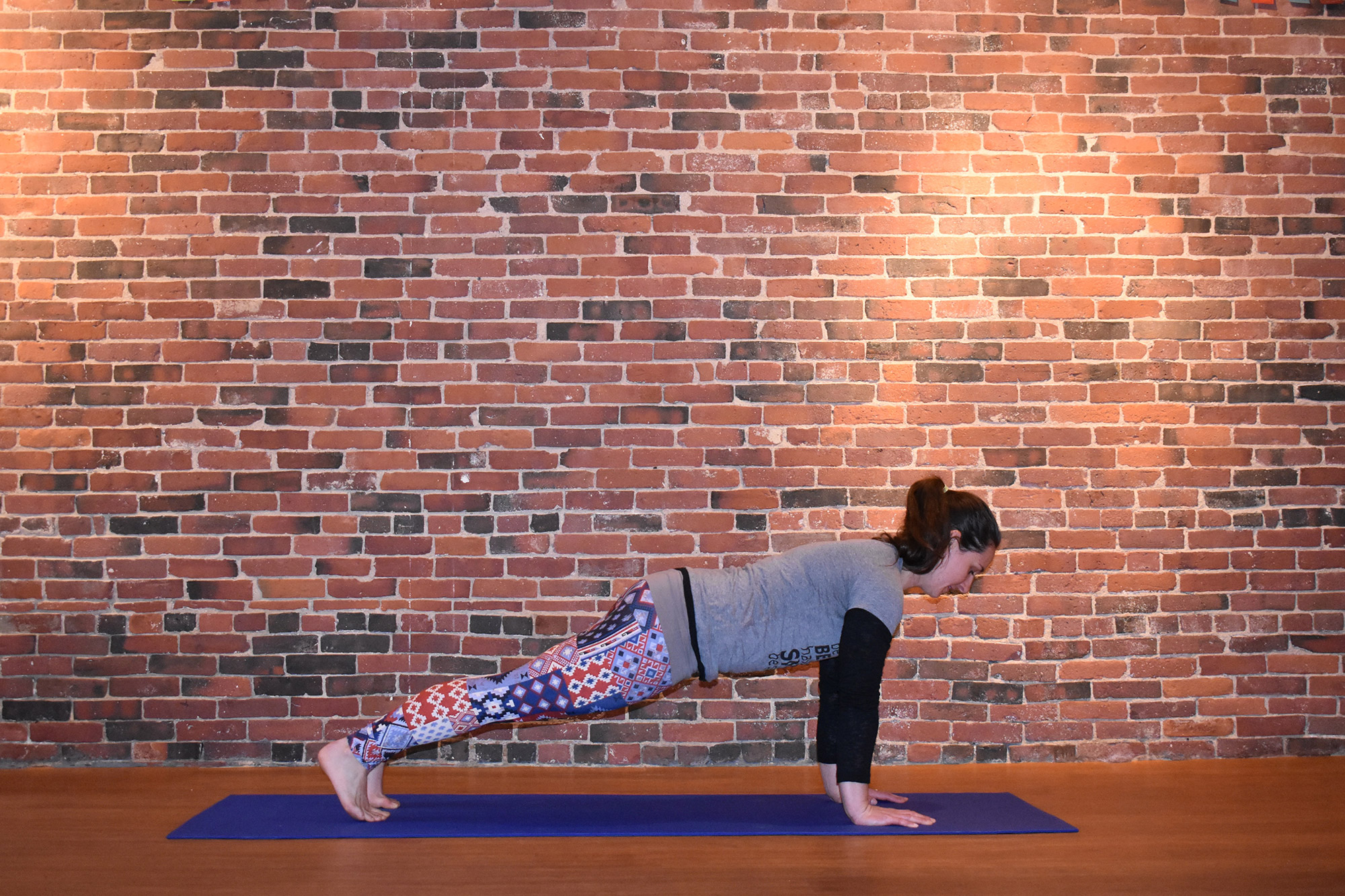Short, tight muscles don’t feel great, and when it comes to running (or hiking or biking or any sport, really), they can lead to imbalances and inefficiency. Foam rolling and massage are effective ways to relieve muscle soreness and boost recovery, but a good stretch session after each run will help lengthen your muscles, putting them in prime condition to crush your next one.

1. Upward Salute
Most of our post-run poses will address the core and lower body, but your shoulders and upper back deserve a good stretch, too! Spend a few breaths in Upward Salute to stretch the shoulders, back, and armpits. You’ll be surprised by how nice it feels. Begin by standing tall with either your big toes touching or your feet hip-distance apart. Relax your shoulders and rotate the arms, so that your palms face forward. On an inhale, sweep your arms out to the sides and overhead, bringing the palms to touch. However, if that makes your shoulders feel too hunched, keep the arms parallel with the palms facing each other instead. Hold here for a few deep breaths. When you’re ready to move on, use an exhale to hinge forward into a standing-forward fold.
- Variation: Add in some side bends to stretch your obliques. On an exhale, bend your upper body toward the right, keeping your pelvis facing forward. Inhale back to upward salute, and then, exhale into a left side bend. Repeat three to five times on each side.

2. Cross-Leg Forward Fold
After spending a few breaths in a regular forward fold, return to standing just long enough to cross your right leg in front of the left. Fold forward again on your next exhale, reaching your fingers to the floor. Spend a few breaths like this, and then, repeat with the left leg in front. Adding the leg cross is a great way to stretch the outer hamstrings and address tight hips and cranky IT bands.
- Variation: If your legs are too tight to bring your hands to the floor, use a stack of books or a couple of Nalgene bottles to rest them on.

3. Figure Four Chair
The glutes are a key muscle used in running, and without good balance, runners would just fall all over the place all the time. The best part of this stretch is that it helps with both! Start by standing with your feet somewhere between hip- and shoulder-distance apart and with your hands on the hips. Keeping your weight in the heels, lower your butt toward the floor. Peek down at your toes here; if your knees aren’t blocking them from sight, you’re good to go! Once you’re as low as you can comfortably go, shift your weight onto the right leg, and pick the left leg up, bringing the left ankle to rest on the right thigh. Keep your hands on your hips if you like, or reach the arms overhead. Hold for five to 10 breaths, and then, switch sides.
- Variation: Use a wall or chair to help keep your balance if you need a little extra stability.

4. Squat
Hitting the road, trail, or track for miles at a time is a lot easier when your legs function with a full range of motion. And, an easy way to stretch and increase (or maintain) your legs’ range of motion—front, back, inner, outer, and from ankle to hip—is by spending some time in a “yogi’s squat.” Begin by standing with your feet about shoulder-width apart, and lower into as deep of a squat as you can while keeping your heels on the floor. If the heels won’t stay down, try placing a rolled-up towel under them. Bring your palms together in front of your chest, and use your elbows to gently press the knees away. Hold for at least 10 breaths, and then, bring your hands to the floor and step your feet back to come into a plank.
- Variation: If your hips could use a little bit deeper stretch, spend a few breaths slowly rocking side to side before moving onto your plank.

5. Plank
There’s a fun little saying in the yoga world that “the pose you don’t like is the pose you need,” and the proof is in the pudding—er, plank. I’ve never met anyone, runner or otherwise, who enjoys holding plank pose, but the benefits of this simple-looking exercise are so vast that it’s one we should all probably be doing every day. Runners can use plank to build strength in their core, glutes, and legs all at once—not to mention mental strength, which some runners may argue is just as important as physical strength.
On the off-chance you’ve never done a plank before, here’s the deal: The goal is to create a long line from your heels to your head. Keep the wrists directly under the shoulders, gaze down-but-slightly-forward to maintain neutrality in your neck, press back through your heels, and don’t let your butt sag or stick up too high. Keep your core engaged by “pulling” your belly button toward the spine. Hold for as long as you can, and then, use Downward-Facing Dog or Child’s Pose to rest.
- Variation: There are so many! If a traditional plank is too intense, lower your knees to the floor, or try a forearm plank instead. If you want to spice things up a bit, play around with leg lifts, “running planks,” or side planks. Want to stretch the obliques some more? Lower to forearm plank, and do a few rounds of hip dips.

6. Lizard Pose
Everyone wants a “tight butt,” but for runners, tight glutes are no bueno—especially when you’re trying to nail your hill repeats and speed workouts. Use lizard pose to give your glutes some post-run love, as well as to stretch the hip flexors, hamstrings, and quads. From your plank, step the right foot up to the outside of your right hand. Lower the left knee to the floor for a little less intensity, or keep it lifted for a deeper stretch. If it’s comfortable, lower down to your forearms; if not, continue pressing into the floor through your hands. Stay here for about 10 breaths, and then, switch sides.
- Variation: If it feels okay, gently roll onto the outer edge of the front foot to open up the hips and stretch the groin and hamstrings a little more.
- Variation: Add in a deep quad stretch by lowering the back knee to the floor and bending the leg, reaching back to hold onto your foot or ankle with the same side hand.

7. Toes Pose
Whether your dogs are barking because you suffer from plantar fasciitis or simply ran a little too hard today, it’s important to stretch out the soles of your feet. Begin on all fours with your toes tucked so that the balls of your feet are on the floor. Keep it here if you can already feel the stretch through the bottoms of your feet; otherwise, start to walk yourself back toward a kneeling position. If you can bear it, sit all the way back on your heels with a nice, tall spine and hold for up to a minute.

8. Legs Up the Wall
If you only have time for one yoga pose after a run, make sure it’s this one. Legs up the wall not only feels amazing, but it also gently stretches the hamstrings and lower back, helps reduce swelling and cramping in the feet and legs, slows down your heart rate, and can boost circulation. Start by sitting with one hip as close to a wall as possible. In one semi-fluid motion, roll your upper body down and swing your legs up, so that you’re lying flat on your back with your legs, well…up the wall. You can control the intensity of the stretch in the backs of your legs by shimmying closer to or farther from the wall. When you find the sweet spot, close your eyes and rest for as long as you want—you’ve earned it!
- Variation: If your hips and inner thighs could still use more stretching, move the legs into a “V” shape for a wide-legged legs up the wall, OR bring the soles of the feet together and use your hands to gently push the knees toward the wall.
Ashley Peck
Ashley Peck spends her days perpetually over-caffeinated and trying VERY HARD to not buy every single book that passes through her hands while working at the local indie bookstore. At night, she lurks in the shadows at the rock gym, waiting for the right moment to spite-send your project (as long as it's no harder than V5). In her free time, she likes to hike, ride bikes, think about running, ski, snuggle her dogs, read the books that she's definitely not buying and sneaking into her house every day, and eat entirely too much cottage cheese.
Related Posts
April 2, 2024
10 Tips for Mountain Biking Etiquette During Mud Season
One rough spring could ruin the…




